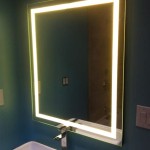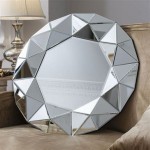How to Mirror Mac Screen on Smart TV
Mirroring a Mac screen to a smart TV offers a range of benefits, from enjoying personal photos and videos on a larger display to delivering impactful presentations. This article outlines various methods to achieve this, catering to different TV models and user preferences.
1. Using AirPlay to Mirror Your Mac to Apple TV or AirPlay 2-Compatible Smart TVs
AirPlay is Apple's proprietary wireless streaming technology, enabling seamless screen mirroring between Apple devices and compatible TVs. This is the simplest method if the user possesses an Apple TV or a smart TV with built-in AirPlay 2 support.
To mirror the Mac screen, ensure both the Mac and the Apple TV or AirPlay 2-compatible TV are connected to the same Wi-Fi network. On the Mac, click the Control Center icon in the menu bar. Click "Screen Mirroring." Select the Apple TV or AirPlay 2-compatible TV from the list of available devices. The Mac's display should now be mirrored on the television.
To stop mirroring, click the Control Center icon in the menu bar again. Click "Screen Mirroring" and then select "Stop Mirroring."
Users can adjust the display settings for the mirrored screen by going to System Preferences > Displays. Here, they can select the resolution and scaling options that best suit their TV.
2. Utilizing HDMI Cable for a Direct Connection
Connecting the Mac to the smart TV using an HDMI cable provides a wired connection, ensuring a stable and lag-free mirroring experience. This method is particularly suitable for activities requiring high bandwidth and minimal latency, such as gaming or video editing.
First, acquire an HDMI cable and, if necessary, a suitable adapter for the Mac. Modern Macs may require a USB-C to HDMI adapter, or a Mini DisplayPort to HDMI adapter for older models. Connect one end of the HDMI cable to the HDMI port on the TV and the other end to the corresponding port or adapter on the Mac.
Next, power on both the Mac and the TV. On the TV, select the input source corresponding to the HDMI port the Mac is connected to. The Mac's display should automatically be mirrored on the TV. If not, access the Mac's Display settings in System Preferences. Here, the user can select the TV as the display and adjust resolution and mirroring settings.
This wired method bypasses the need for a wireless network, offering a consistent and reliable connection regardless of network conditions.
3. Mirroring with Third-Party Apps for Non-AirPlay 2 TVs
For smart TVs that do not support AirPlay 2, several third-party applications facilitate screen mirroring from a Mac. These apps often require installing software on both the Mac and the TV or utilizing a streaming device that supports the app.
Research and select a reputable third-party mirroring app that supports the specific smart TV model. Common options include apps like AirBeamTV, Reflector, and JustStream. Follow the app's instructions to install the necessary software on both the Mac and the TV or streaming device. Ensure both devices are connected to the same network.
Launch the mirroring app on both devices. On the Mac, select the TV from the list of available devices within the app interface. The Mac's screen should then be mirrored on the TV. Specific features and functionalities may vary depending on the chosen app.
These third-party applications effectively bridge the gap for TVs lacking native AirPlay 2 support, expanding mirroring capabilities to a wider range of smart TV models.
4. Troubleshooting Common Mirroring Issues
Occasionally, users might encounter problems during the mirroring process. Some common issues include no signal on the TV, poor video quality, or audio sync problems. Basic troubleshooting steps include verifying that both devices are on the same network and that the necessary software and drivers are up to date.
Checking network connectivity is crucial for AirPlay and app-based mirroring. Restarting the router or modem can often resolve network-related issues. If using an HDMI cable, ensure the cable is securely connected to both devices and is undamaged. Trying a different HDMI cable can rule out cable-related problems.
If issues persist, consulting the specific app’s support documentation or the TV manufacturer’s website for troubleshooting guides might provide model-specific solutions. Updating operating systems and drivers on both the Mac and the TV can also resolve compatibility issues.
By following these troubleshooting tips, users can overcome common mirroring challenges and enjoy a seamless screen sharing experience between their Mac and smart TV.
How To Mirror A Mac Tv Osxdaily
How To Screen Mirror Mac Hitachi Tv Wireless Try Free App
6 Ways How To Mirror Your Macbook Samsung Tv
How To Mirror Mac Screen Samsung Tv Without Apple
How To Mirror Xiaomi Tv Mac Macbook Pro Wirelessly
How To Use Apple Airplay Mirror Your Iphone Mac Screen On Tv Roku And More Cnet
How To Mirror A Mac Tv Osxdaily
How To Connect A Macbook Pro Or Air Tv Asurion
How To Mirror A Mac Tv Osxdaily
How To Airplay Mirror Mac Samsung Smart Tv Without Apple Redmond Pie








